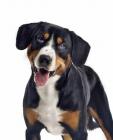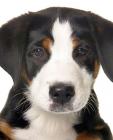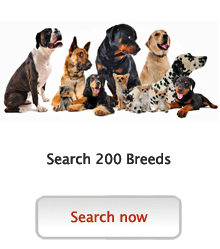Greater Swiss Mountain Dog
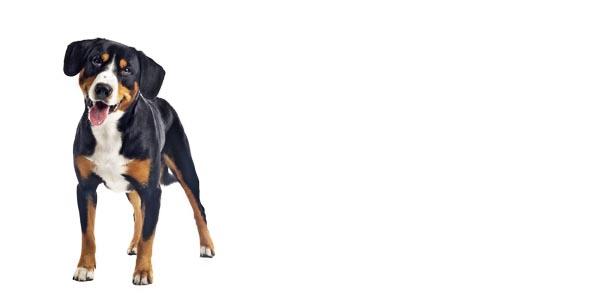
In my own words
My kind has always been a working dog but I make a great family pet too you know. I may be big but I’m not really boisterous, I’m actually rather calm and dignified even if I do say so myself! I love being part of all the family activities though, whatever you’re doing, I want to join in!
I must admit, I do have a tendency to try and eat just about anything. What can I say? I love trying out weird stuff to see if it’s a good treat... You never know, there might be something really tasty in that dirt over there!
My ideal owner(s)
Singles
Active, outdoorsy types
Families with older children
What they say about me
Devoted
Alert
Fearless
Please read on, to find out more about me, and whether I will be someone you can be happy with for the next 11 years, or even longer!
Is this Greater Swiss Mountain Dog for you?
Test your knowledge about the Greater Swiss Mountain Dog
Information essential about the Greater Swiss Mountain Dog
Kennel Club Group:
Working
Size:
Giant: Weight Male 132 – 154 lb (60 – 70 kg) Female 110 – 132 lb (50 – 60 kg)
Height: Male 26 – 28” (65 – 72 cm) Female 24 – 27” (60 – 68 cm)
Popularity:
This breed was first important into the USA in 1967 but remains a rare breed even in Switzerland.
Breed History:
The origins of the Great Swiss Mountain Dog is not entirely clear but it is thought that they are descended from the Molosser, a large Mastiff type dog which was brought to Switzerland by the Romans in the first century B.C. From these dogs, other breeds were created by crossing and inbreeding.
Greater Swiss Mountain Dogs are almost certainly the result of crossing native farm dogs with large Mastiff type dogs brought into Switzerland. The early ancestors of this breed were used by farmers, merchants and herdsmen in central Europe and the breed was bred as a draft dog to pull carts, to guard and move dairy cattle and as a watchdog and family companion.
The Greater Swiss Mountain Dog may have contributed to the develop of the St. Bernard. The breed almost became extinct in the late 1800s but they were rediscovered in 1908 by Professor Albert Heim, who took a great interest in the Sennenhund breeds. He helped to re-establish the breed and save it from extinction. The Greater Swiss was first imported into the USA in 1967 but is still rare even in Switzerland. They were first recognised by the AKC in 1995.
Character:
The Greater Swiss is a sociable, active dog that loves being part of the family and has a strong affinity to people and children. They are calm and dignified but they crave attention. They are happy and enthusiastic and eager to please. They are gentle with children but can be stubborn and determined. They can be difficult to housetrain but are intelligent and quick learners. They have a tendency to try to eat just about anything. They are alert and vigilant, making good watchdogs. They are confident and self assured, being stable around unfamiliar people or situations. They are accepting of other dogs and animals and reluctant to bite.
Temperament:
This happy breed is willing and eager to please. They are calm and dignified and have an easy going, sweet nature. They are excellent with children, good with other pets and not dog aggressive. They are extremely loyal and devoted to their family and are protective of their home. They are keen watchdogs who will bark to alert their owners of unexpected visitors. They crave attention and love being part of the family, not being well suited to being confined to a kennel.
Conformation:
The Greater Swiss is a large, sturdy, muscular dog. The skull is flat and broad and the muzzle is blunt. The eyes are medium sized and almond shaped and vary from hazel to chestnut in colour. The ears are medium sized, triangular in shape and slightly rounded at the tip. The ears hang close to the head. The front legs are straight and the feet are round and compact. The chest is deep and broad and the tail tapers to a point.
Coat:
The Greater Swiss has a double coat with a dense outer coat between 1 – 2 inches (3 – 5 cm) long. The undercoat is dense.
Colour:
The coat comes in tricolour with a black base and rust and white markings. Symmetrical markings are preferred. Rust markings appear above each eye, on the cheeks and either side of the chest. White appears as a blaze on the muzzle, chest and tip of the tail. There may be a white collar or patches of white on the neck.
Training:
This breed can be energetic and boisterous and benefits from early socialisation and training in order to get along with other animals and people. They require firm, consistent training in order to assert yourself as the master, otherwise they can become dominant. They can be difficult to house train. The Greater Swiss is talented in tracking, guarding, carting, competitive obedience and as a watchdog.
Care:
The Greater Swiss Mountain Dog has a smooth coat which is easily groomed and they benefit from regular brushing. This breed is an average shedder
Health:
The lifespan of a healthy individual is about 10 to 11 years. If you buy from a reputable, responsible breeder, health problems should not occur. The breed is generally a healthy breed for their size and has fewer problems than other similar sized dogs. They can be prone to bloat, epilepsy and hip displasia. They can also suffer from distichiasis (extra eyelashes), lick fits where they will frantically lick anything in sight which is reported in 17% of the breed. Many owners prevent lick fits by ensuring the dog never has an empty stomach and instead feeds them several smaller meals during the day with large dog biscuits in between meals. This breed can also suffer urinary incontinence and typically occurs while they are sleeping. More than 20% of females are affected usually after being spayed. Incontinence is occasionally found in males as well.
Exercise:
While capable of being athletic, the Greater Swiss is usually very active in short bursts followed be naps. They enjoy taking part in family activities and their activity level will often match the activity level of the family. They do require good daily walks and as a working dog they enjoy having a job to do. They enjoy participating in hiking, carting, competitive obedience, herding, weight pulling and back packing with their owners.
You may also like:
If you like Greater Swiss Mountain Dogs, you may be interested in breeds of the same size »
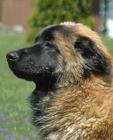
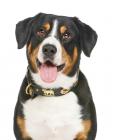
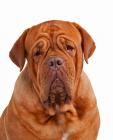
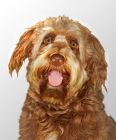
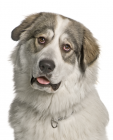
If you like Greater Swiss Mountain Dogs, you may like other breeds with similar characteristics »

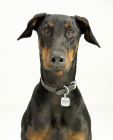
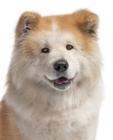
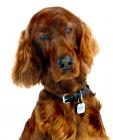

Advice on choosing your breed »
Find an animal shelter or rescue home where a Greater Swiss Mountain Dog is waiting for a new home »
The following grid gives a fast track review which covers all breeds. You can apply it to help you decide if a Greater Swiss Mountain Dog is suitable for you, the environment where you live, your personality and your lifestyle. On the grid, 1= strongly disagree, and 5= strongly agree. For example, if you are looking for a dog that likes running and jogging, look down the list under Activities, and you will see that Greater Swiss Mountain Dog loves running and jogging, scoring 5. If you want a guard or watch dog, look down at Role and Suitability, and you will see that Greater Swiss Mountain Dog make excellent guard and watch dogs, and score 5. You might like to save or print off this section and keep it for reference while you check some other breeds before making your final choice.
Be the first to rate this breed »
|
*PLEASE NOTE: All our breed profiles are general, and all dogs are individuals. Always talk to the breeders and meet the owners you are buying from. Try to meet the dog and its parents if it is a puppy in their home environment.








